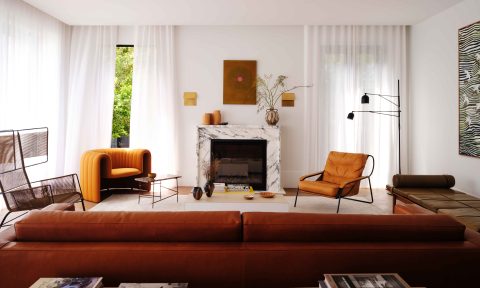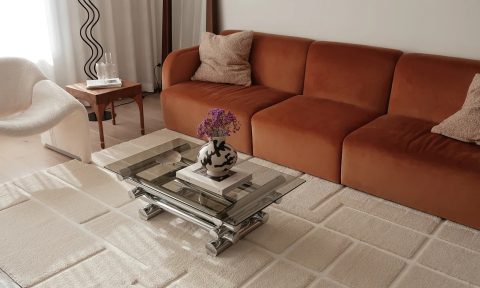Daphna Tal is the in-house interiors specialist for Australian Living, a leading sustainable building consultancy which focuses on upping the ante in the residential market. Interiors Addict speaks to her and takes a look around this stylish sustainable home (inside and out) in Sydney’s Rose Bay.

“Why aren’t there more interior specialists focused on sustainability? What is stopping or hindering them? Why is the product choice so limited? Why aren’t consumers demanding it? Do sustainable products really need to cost more? How many interior specialists provide sustainable options or do they wait until their customers ask for a sustainable option? These are all questions I ask myself on a regular basis and you must wonder how I sleep at night,” Daphna says.
“I actually do sleep well at night knowing that the products, that I use and recommend to my customers, are made by companies who are environmentally conscious, using sustainable materials, providing their workers with clean working environments and real wages. Also I am providing my customers with healthy alternatives.”
Daphna says a whole raft of interiors products need real improvement in terms of sustainability, including fabrics for couches, tiles, rugs, paint and feature lighting. “My best advice to interior specialists would be to approach suppliers sceptically. They like to greenwash products, and say yes to things being eco-friendly, but it is essential to have proof such as certification, life cycle analysis and up-to-date documentation.”
Sustainable interiors, according to Daphna, help create homes that are aesthetically beautiful, natural and provide a healthier lifestyle environment for the residents. For too long, the idea of sustainable homes has only considered exteriors. “The community is bombarded with solar panels, water tanks and worm composting bins which are all add-ons. They should be thinking about sustainability in terms of the whole house inside and out; the way it is design, constructed and finished with sustainable materials and interior products.” And product suppliers should be taking a lot more responsibility.
Her top tips:
- Think sustainable in the same thought as form and function.
- Start questioning suppliers on how sustainable their product really is. Look for credible certification.
- Have fun with doing the interiors. Think outside the square. For example, a wooden plant holder stand can be used as a hallway table. Use fabric offcuts to make cushions, lounge coverings and even light shades.
- Buy secondhand. Stop quality made products going to landfill.
- Choose products that have low toxic levels such as water-based paints. Be very wary with paints as there are many different meanings to low or no VOC (volatile organic compounds).
Daphna adds: “Sustainable living is important because it allows us to live healthier; it connects us more to our natural environment and reduces our carbon footprint. There are no negatives to living sustainably that I can see. Sustainable living requires a holistic approach so it becomes a part of daily life.”
She worked with Australian Living on its sustainable show home in Rose Bay (pictured). “Its main feature is a beautiful internal courtyard that acts as a thermal heart, controlling the energy flow throughout the home. It contains a magnificent green wall that acts as insulation and provides clean air. Other features include the use of sustainable materials and products inside and out, a permaculture garden front and back and energy and water saving solutions. Each room is zoned to be thermally comfortable, and no artificial heating or cooling is installed. The home is sustainable right down to the tile adhesive.”
Find out more at www.australianliving.info













